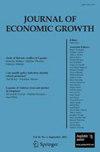第六章
IF 2.3
1区 经济学
Q2 ECONOMICS
引用次数: 0
摘要
本文研究的主要问题是如何对俄语的方面差异体系进行表征。这个问题最初是在引言中提出的,现在可以给出一个具体的答案。本文提出的答案是:它们的特征是时间关系。在本工作中采用的具体时间系统是由Reinhart(1986年,2000年)开发的。然而,由于俄语方面的分析是根据时间概念给出的,任何时间关系系统都可能受到挑战,从而推导出俄语方面的差异。Verkuyl(2001)开发了一种不同的时间模型,其潜力仍有待于对俄罗斯数据进行探索。Verkuyl(2001)的时态语义形式化是基于Winkel(1866)。这个建议的实质是重新设计莱辛巴赫的模型,特别是其基本设置,而不从根本上改变概念概念。Verkuyl所提倡的时态系统是在Winkel的三个对立基础上形成的:现在与过去,同步与后(“后性”)和完成与不完成(“前性”)。这样,原来的Reichenbachian 3x3设计变成了一个构图的2x2x2设置。Verkuyl(2001)坚持了语义表征的时间和非时间层面之间的根本区别。这种区别相当于一方面是谓词方面的区别,另一方面是透视方面和时态的区别。至关重要的是,Verkuyl认为谓词的方面值只确定一次:它保持完整并且独立于任何时间信息。本文也采用了这一观点。时态被解释为无时态谓词上的一组结构化操作符,其外延称为E(类似于Reichenbach的事件时间概念)。为了将E表示的信息容纳到Verkuyl系统的时间结构中,E立即被赋值为索引i:本文章由计算机程序翻译,如有差异,请以英文原文为准。
Chapter VI
The main question addressed in this thesis is how the system of aspectual differences in Russian should be characterized. This question was first posed in the introduction and now a specific answer to it can be given. The answer proposed in this thesis is: they are characterized in terms of temporal relations. The specific temporal system that was adopted in the present work is developed in Reinhart (1986, 2000). However, since the analysis of Russian aspect is given in terms of temporal notions, any system of temporal relations can be challenged to derive the aspectual differences in Russian. A different temporal model whose potential should still be explored with respect to the Russian data is developed in Verkuyl (2001). Verkuyl’s (2001) semantic formalization of tenses is based on te Winkel (1866). The essence of this proposal is to redesign Reichenbach’s model, in particular, its basic setup, without radically changing the conceptual notions. The tense system advocated by Verkuyl is formed on the basis of te Winkel’s three oppositions: present vs. past, synchronous vs. posterior (‘posteriority’) and complete vs. incomplete (‘anteriority’). In this way, the original Reichenbachian 3x3 design is changed into a compositional 2x2x2 set up. Verkuyl (2001) maintains a fundamental distinction between the temporal and atemporal levels of semantic representation. This distinction is equivalent to the one made between predicational aspect, on the one hand, and perspective aspect and tense, on the other. Crucially, Verkuyl argues that the aspectual value of a predicate is determined only once: it remains intact and is independent of any temporal information. This view is also adopted in the present thesis. Tenses are construed as a structured set of operators on the tenseless predication, the denotation of which is called E (akin to Reichenbach’s notion of Event time). In order to accommodate the information expressed by E into the temporal structure in Verkuyl’s system, E is immediately assigned an index i:
求助全文
通过发布文献求助,成功后即可免费获取论文全文。
去求助
来源期刊

Journal of Economic Growth
ECONOMICS-
CiteScore
3.70
自引率
4.30%
发文量
20
期刊介绍:
The Journal of Economic Growth, is designed to serve as the principal outlet for theoretical as well as empirical research in economic growth and dynamic macroeconomics. The editorial board consists of prominent researchers in the fields of economic growth, dynamic macroeconomics, international economics, urban economics, migration, and development, who are committed to academic excellence. Members of the editorial board are actively involved in the refereeing process of each paper and assure that the review process is of an exceptional quality. Furthermore, the journal commits itself to a timely response. The journal encourages the submission of high quality research broadly concerned with: Neoclassical Growth Models
Endogenous Growth Models
Income Distribution and Growth
Human Capital and Growth
Fertility and Growth
Trade and Growth
Development and Growth
Financial Development and Growth
Migration and Growth
Endogenous Technological Change
Money and Growth
Political Economy and Growth
Overlapping-Generations Models
Economic Fluctuations. 5-Year Impact Factor: 6.032 (2008)*
Subject Category ''Economics'': Rank 3 of 209 Officially cited as: J Econ Growth
 求助内容:
求助内容: 应助结果提醒方式:
应助结果提醒方式:


